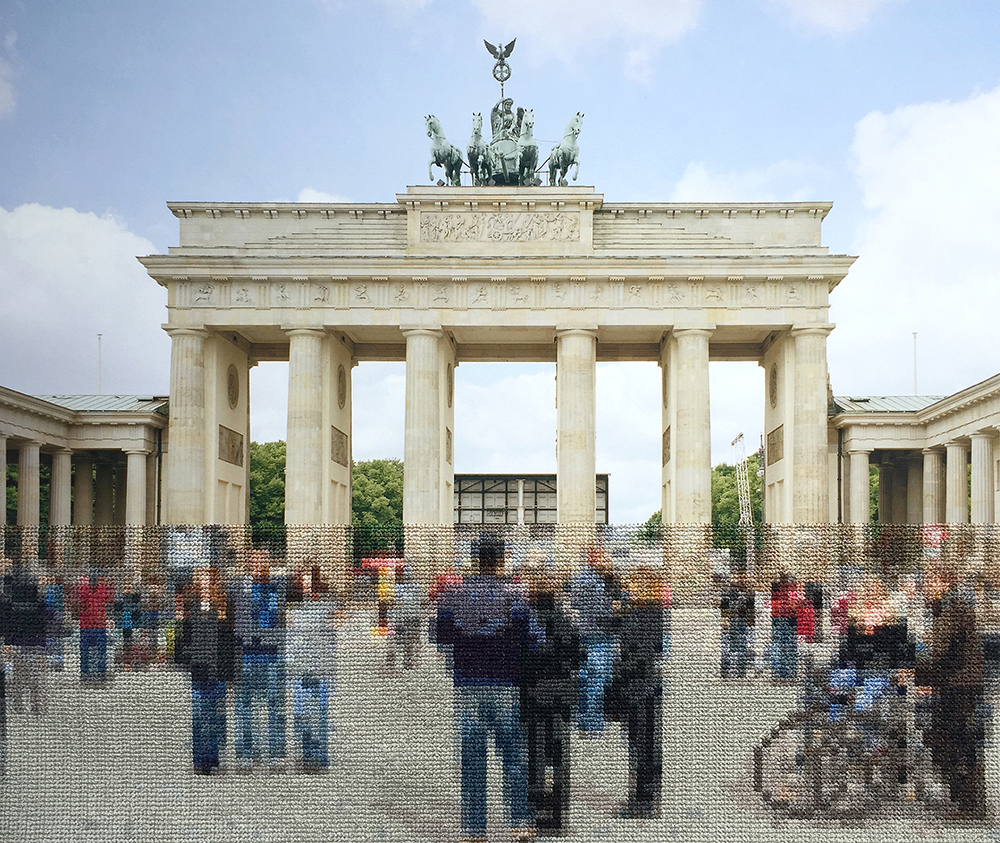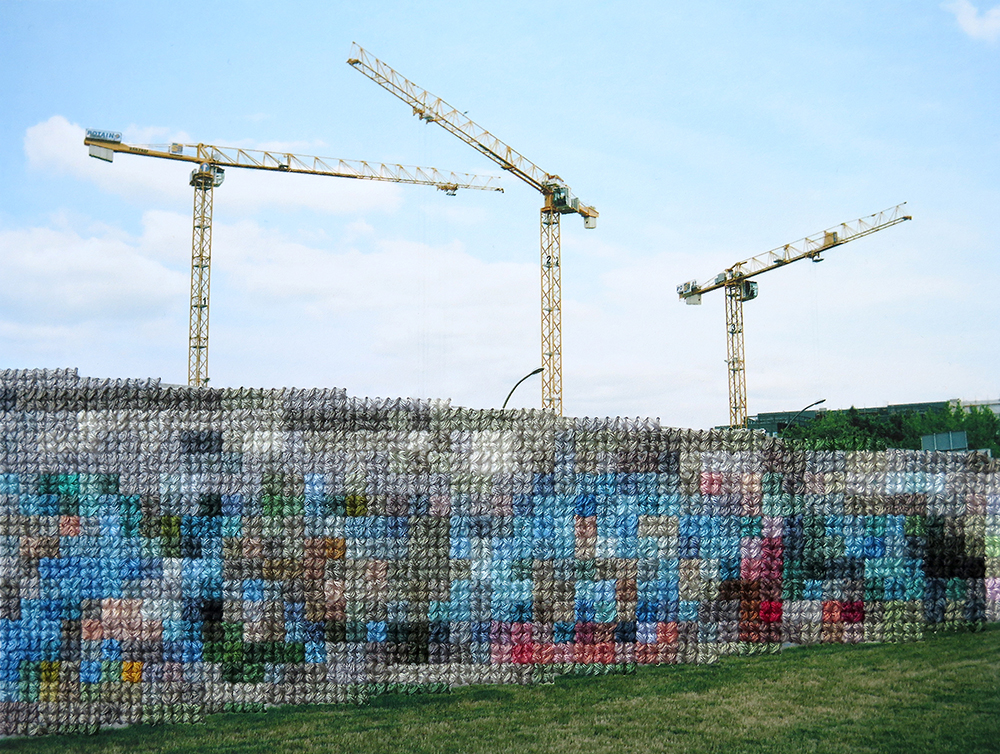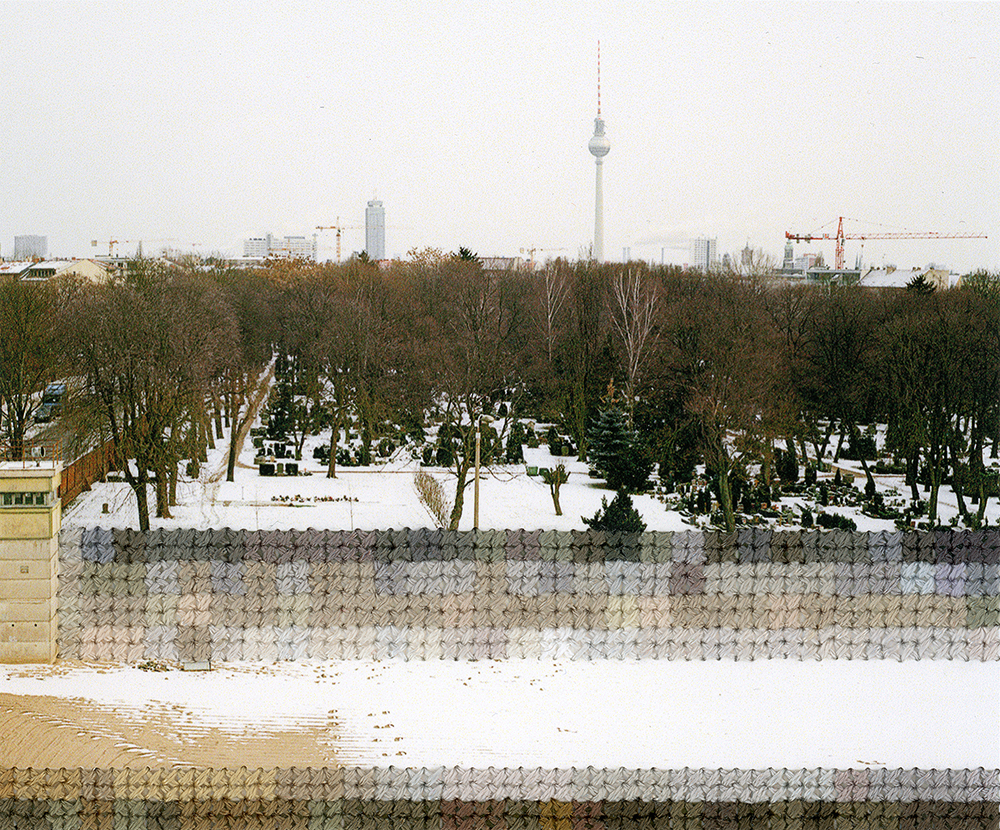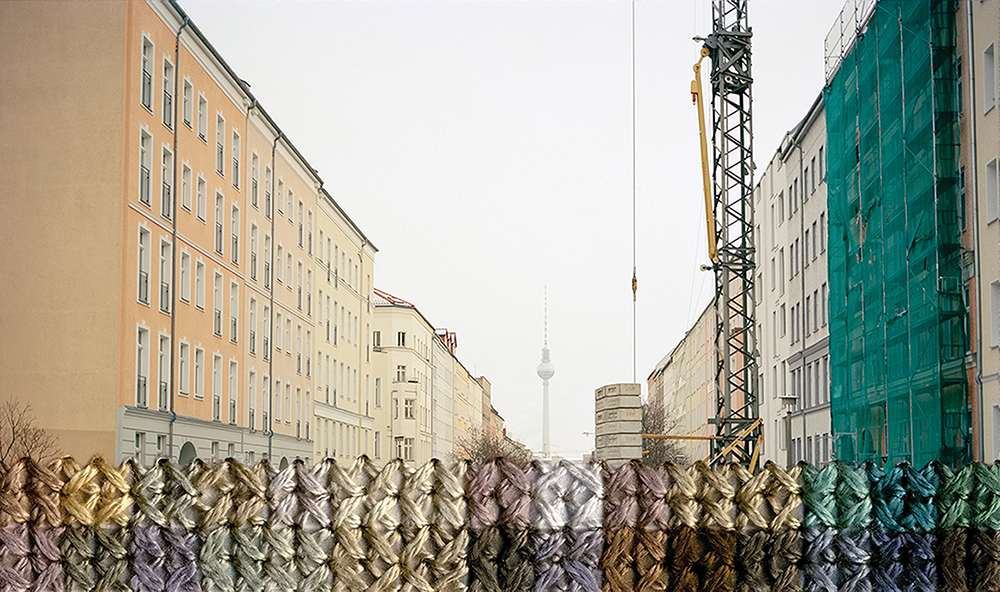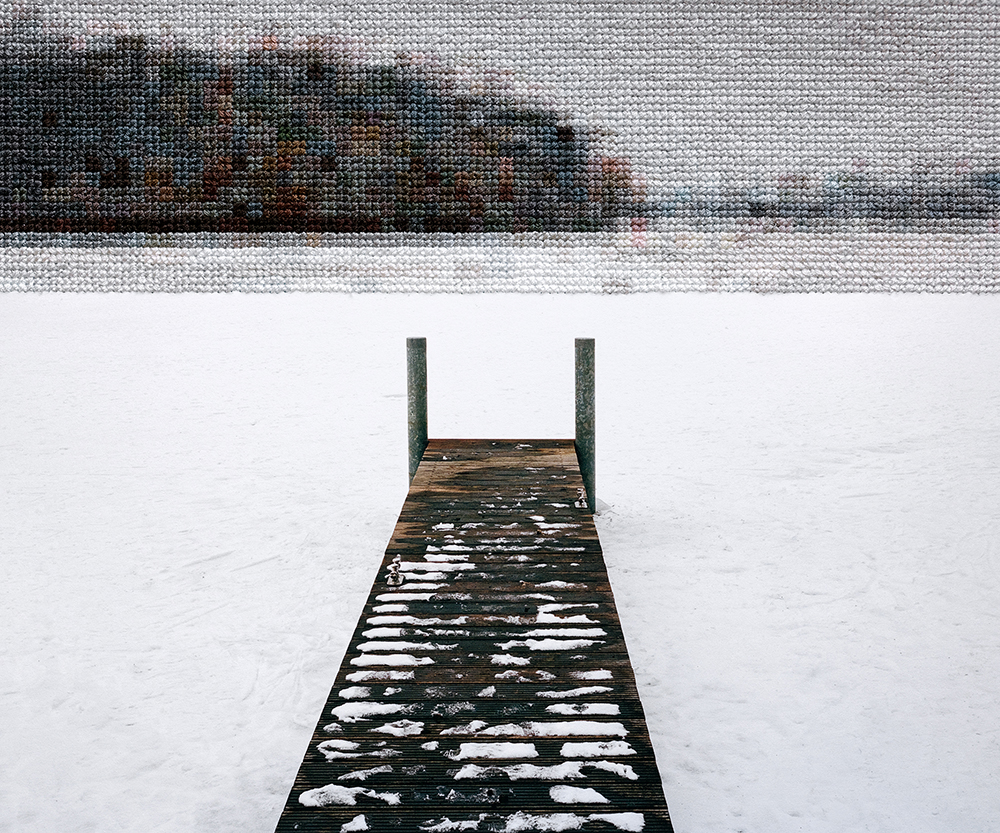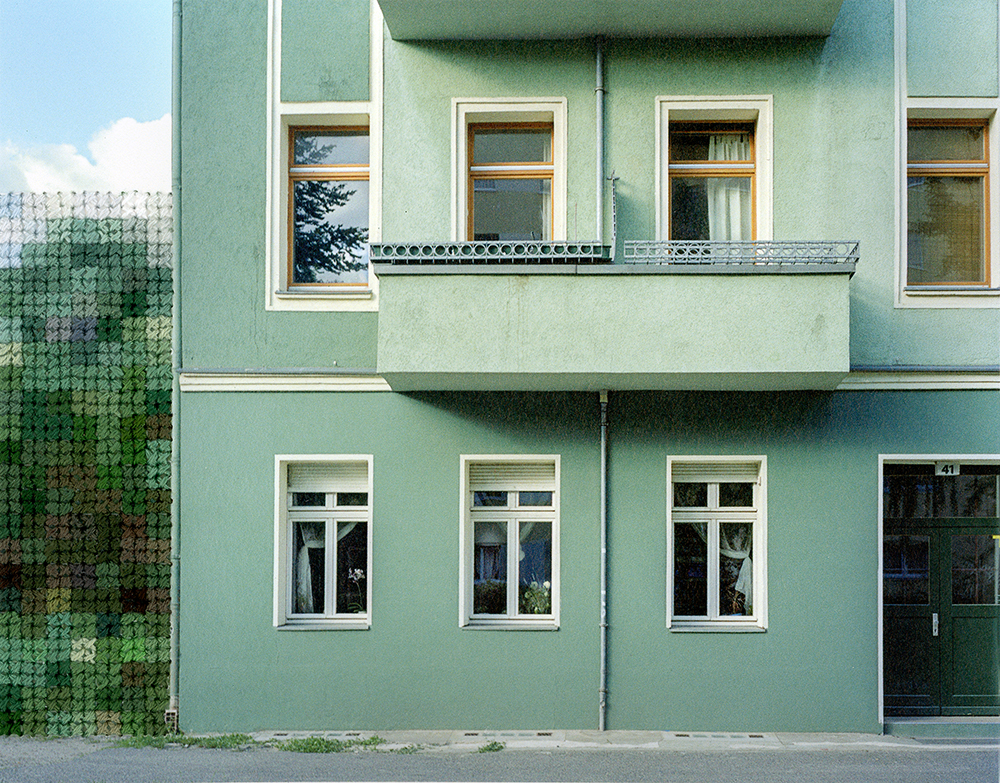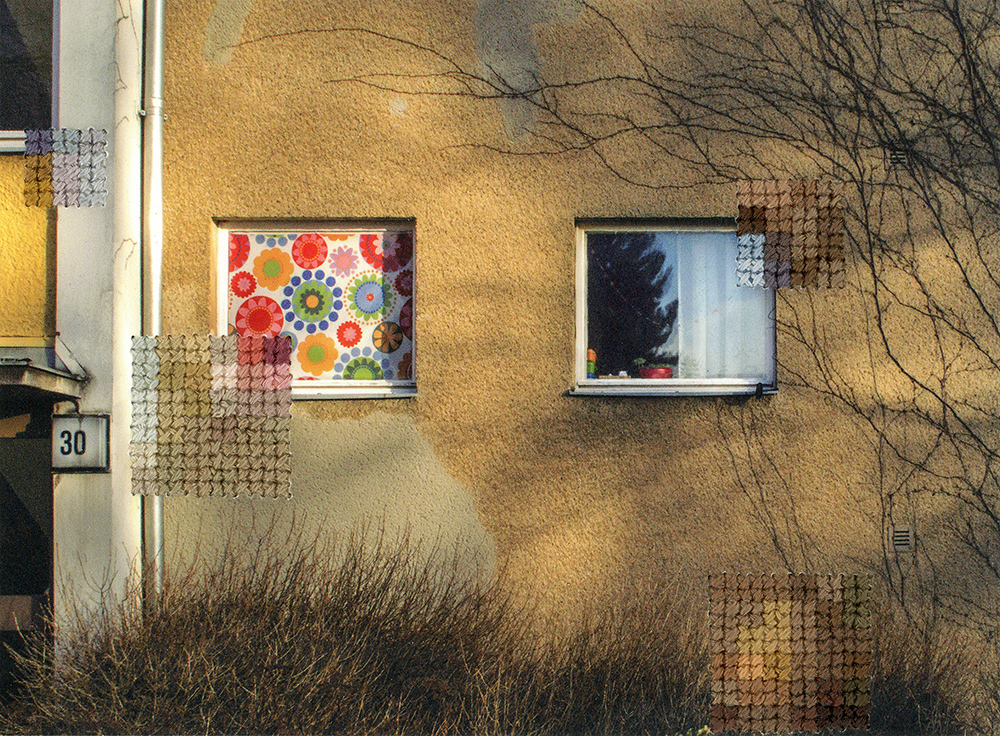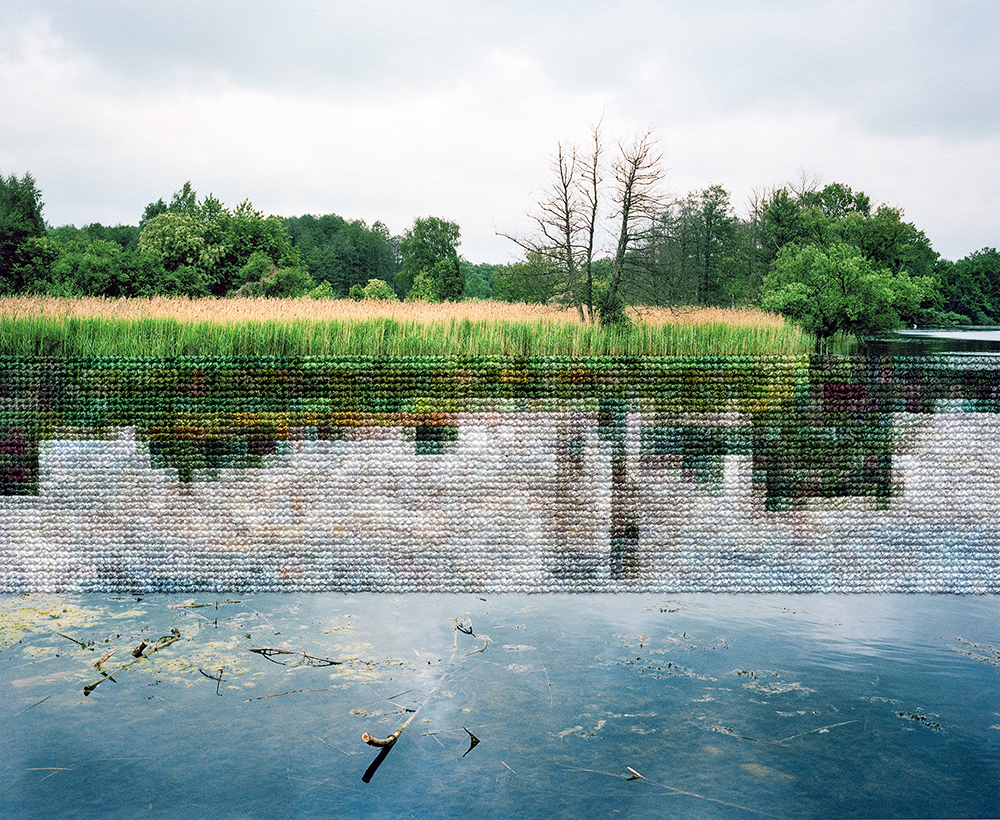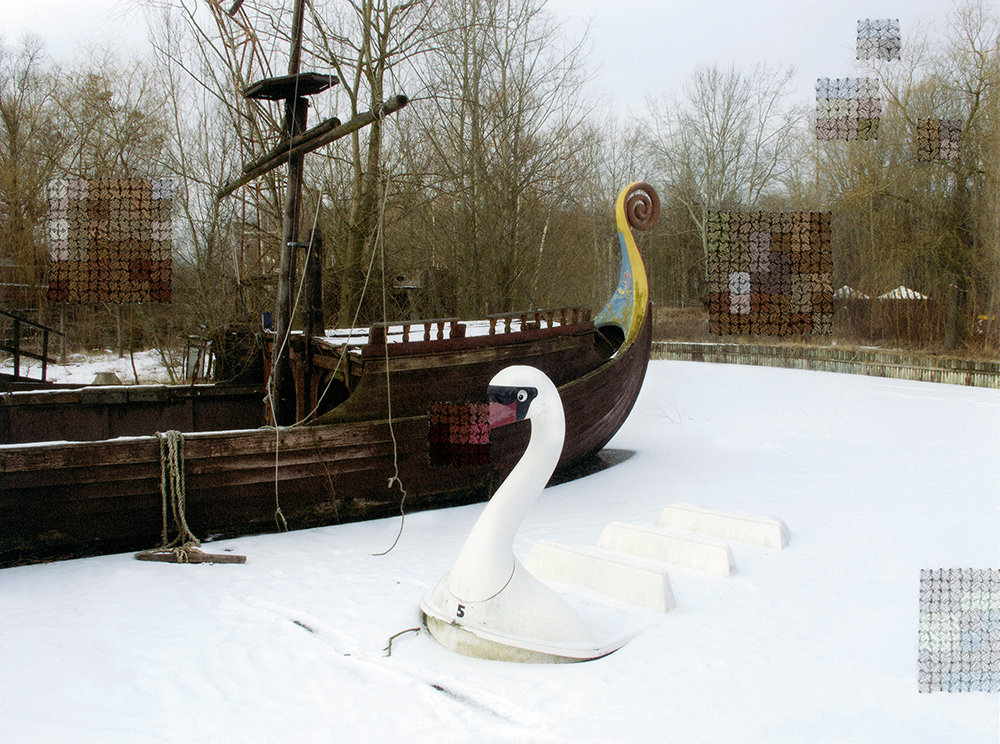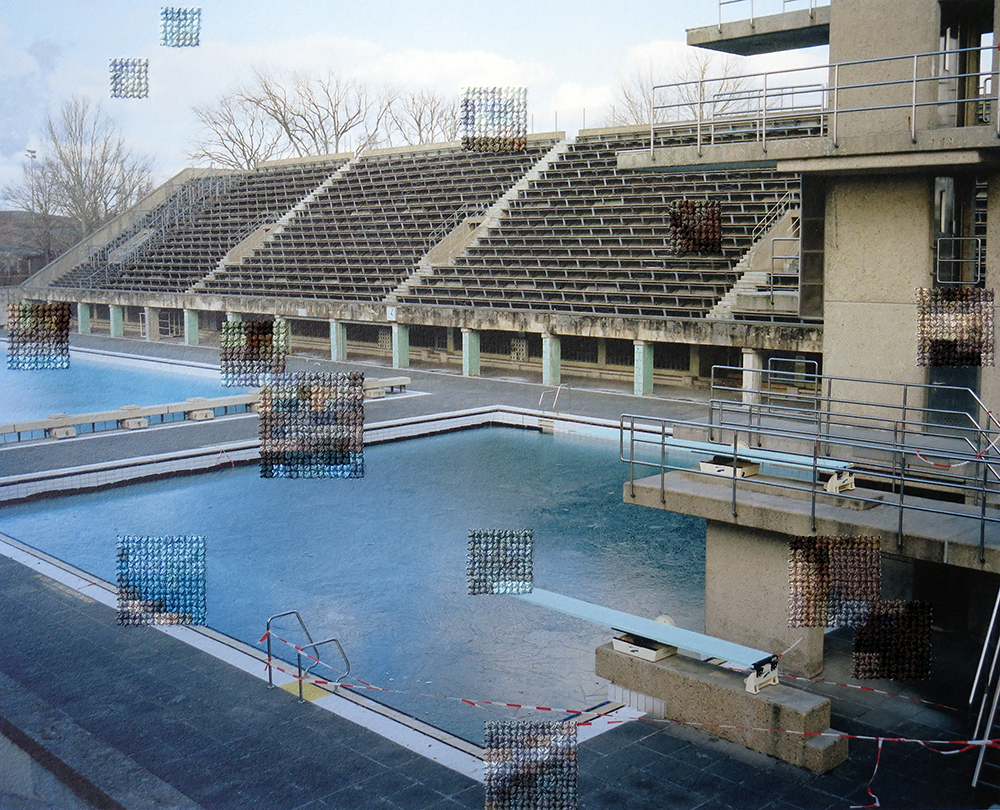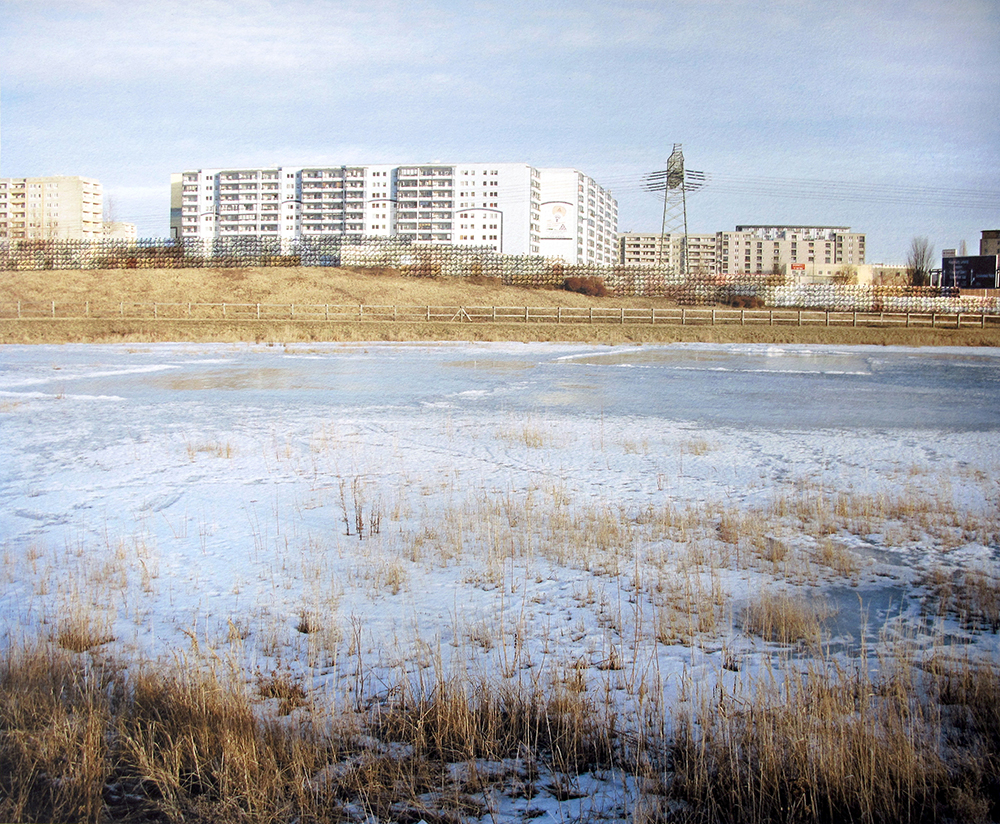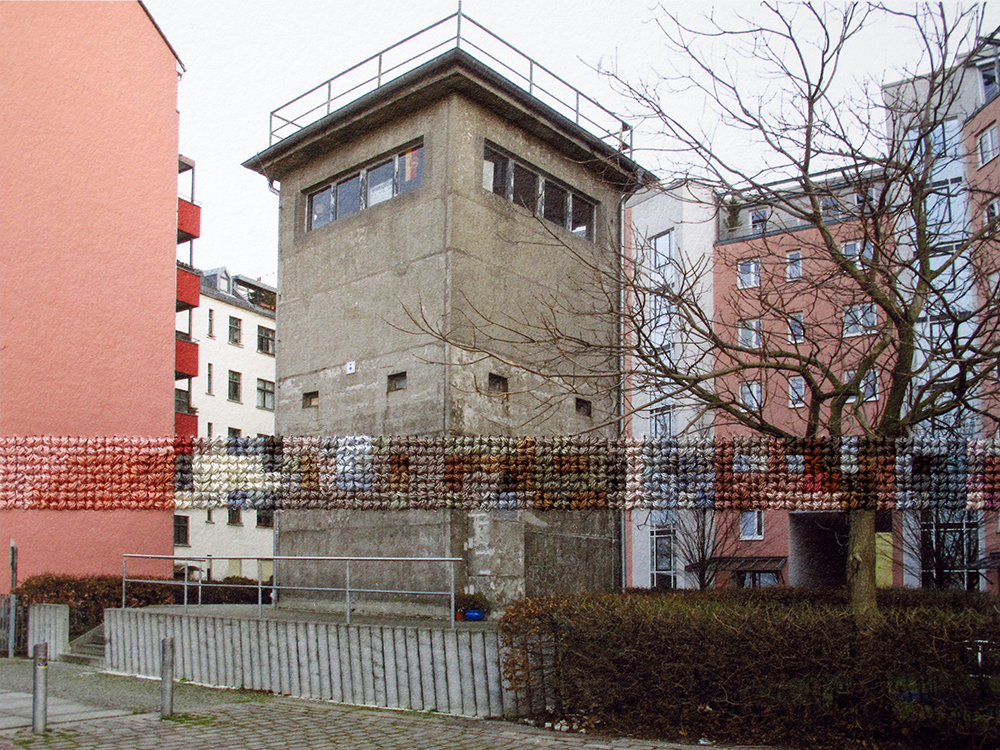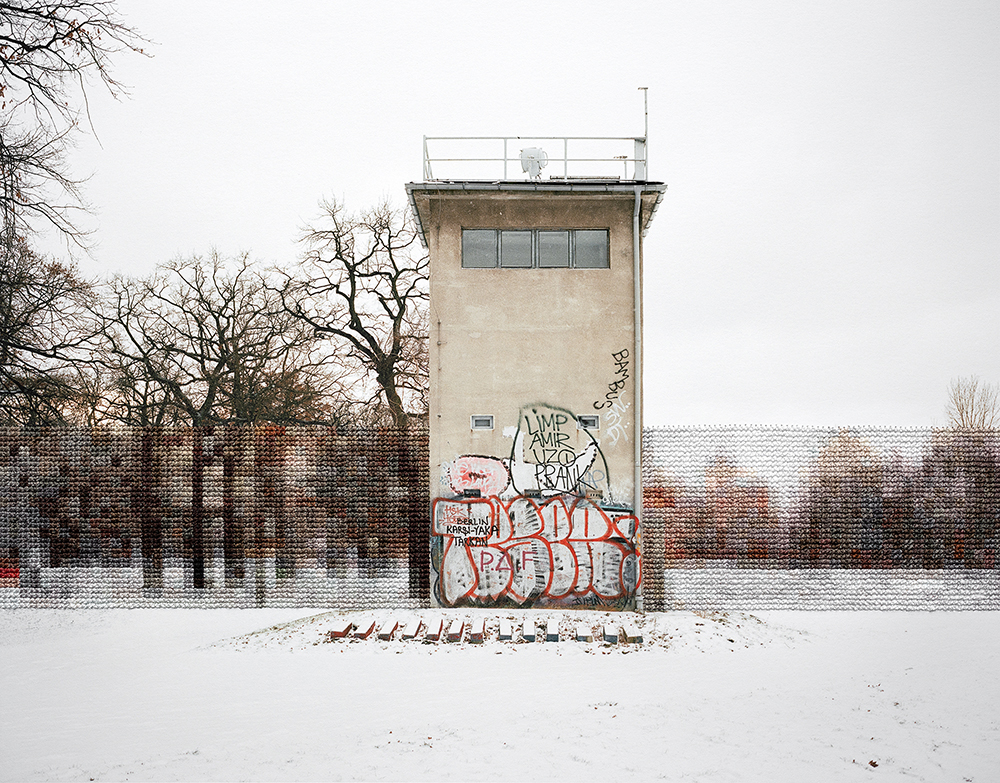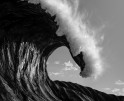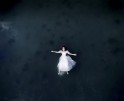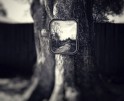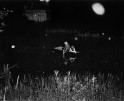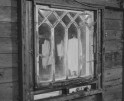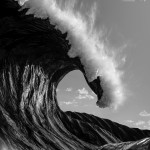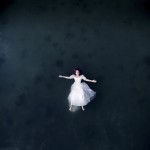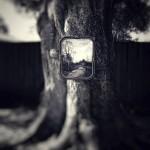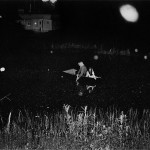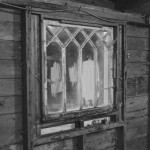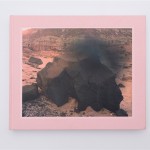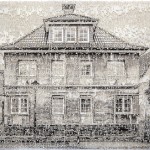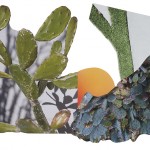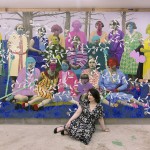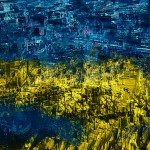Diane Meyer: Berlin
[The Wall’s] ghost, carefully stitched into place, haunts the modern scenes as a kind of floating metaphor for the existence of sharp cultural barriers that were once culturally delineated. – Curators Mia Diaglish and Lisa Woodward
Artist Diane Meyer has a legacy of considering place, from examining the American West to how we navigate a city car-less to contemplating landscape from the perspective of a train window. For the last seven years, Diane has been creating photographs that trace the 96 mile path of the former Berlin Wall, taking in sites in the German capital’s city center, as well as the outskirts of the city through suburbs and the surrounding countryside.
Diane has just opened the exhibition, Berlin at Klompching Gallery in Brooklyn, New York. Being shown for the first time in its entirety, the 43 artworks in the exhibition are being exhibited to coincide with the 30th anniversary of the fall of the Berlin wall, including artworks never before shown.
Diane intervenes with the surface of her photographs with cross-stitch embroidery, sewn directly into the photograph. “The embroidery is made to resemble pixels and borrows the visual language of digital imaging in an analog, tactile process. In many images, the embroidered sections represent the exact scale and location of the former Wall offering a pixelated view of what lies behind. In this way, the embroidery appears as a translucent trace in the landscape of something that no longer exists but is a weight on history and memory.” The result of her efforts are objects that obscure and reveal, that recontexualize space and markers of history.
Diane Meyer (b. 1976) is an alumni of the New York University, Tisch School of the Arts, and gained her MFA from the University of California. Her work has been exhibited widely across the US and internationally. Artworks by Diane Meyer can be found in the collections of the Hood Museum, MoCP, University of Maryland and the George Eastman Museum. She lives and works in Los Angeles, and is represented in the United States by Klompching Gallery.
Berlin
My work has long been defined by explorations into the physical, social and psychological qualities that characterize place. These investigations have taken various forms throughout my career. Just as different locations have different defining features, my work frequently changes genres and mediums in accordance with the conceptual framework in which I am working. I am interested in experimentation and as such, have produced a wide range of projects using different materials including an installation based around the notion of the American West as an invented, mythological space; a large scale photography based project focusing on transportation issues and carless- ness in Los Angeles, a series of installations taken in the sleeper car of a cross-country and several site specific installations in various cities related to local histories.
In the past few years, I have been working on a series of hand-sewn photographs taken along the entire roughly 100 mile path of the former Berlin Wall. Sections of the photographs have been obscured by cross-stitch embroidery sewn directly into the photograph. The embroidery is made to resemble pixels and borrows the visual language of digital imaging in an analog, tactile process. In many images, the embroidered sections represent the exact scale and location of the former Wall offering a pixelated view of what lies behind. In this way, the embroidery appears as a translucent trace in the landscape of something that no longer exists but is a weight on history and memory. By using the embroidery in a way that is reminiscent of pixels, a connection is being made between forgetting and file corruption.
The images were taken in the city center as well as the outskirts of city where I followed the former path of the wall through suburbs and forests. I was particularly interested in photographing locations where no visible traces of the actual wall remain but where one can still see subtle clues of its previous existence. These clues include incongruities in the architecture that occurred as new structures were built on newly opened land parcels, changes in streetlights, or newer vegetation. Often the embroidered sections of the image run along the horizon line forming an unnatural separation that blocks the viewer. This aspect of the sewing emphasizes the unnatural boundaries created by the wall itself. The sewing, which is soft and domestic provides a literal contrast to the concrete of the wall and a metaphorical contrast to its symbolism. As the scale of the stitches remains the same, the overall size of the image determines the amount of detail captured in the embroidery with the larger pieces in the series having over 30,000 individual stitches.
Another theme that runs through my work is an interest in the porous nature of memory and the ways it can be disrupted and replaced by images as well the means by which photography transforms history into nostalgic objects that obscure objective understandings of the past.
By visually referencing pixelization, I am making a connection between forgetting and file corruption.
Curator Claudia Bohn Spector, wrote of the project:
“Meyer’s meticulous stitching pierces the photograph as it heals and conceals the historic fabric to which it alludes, providing a poignant contrast to the unyielding brutality of the Wall itself and reminding us of both photography’s and history’s considerable artifice. What we see in the photographs, then, is what we forget, and it’s only in our erratic remembering that we behold the light of the untouchable past.”

©Diane Meyer, Guard Tower Deutsche Waldjugend Nature Preserve, from Berlin, Archival Pigment Print with Hand-Sewn Embroidery
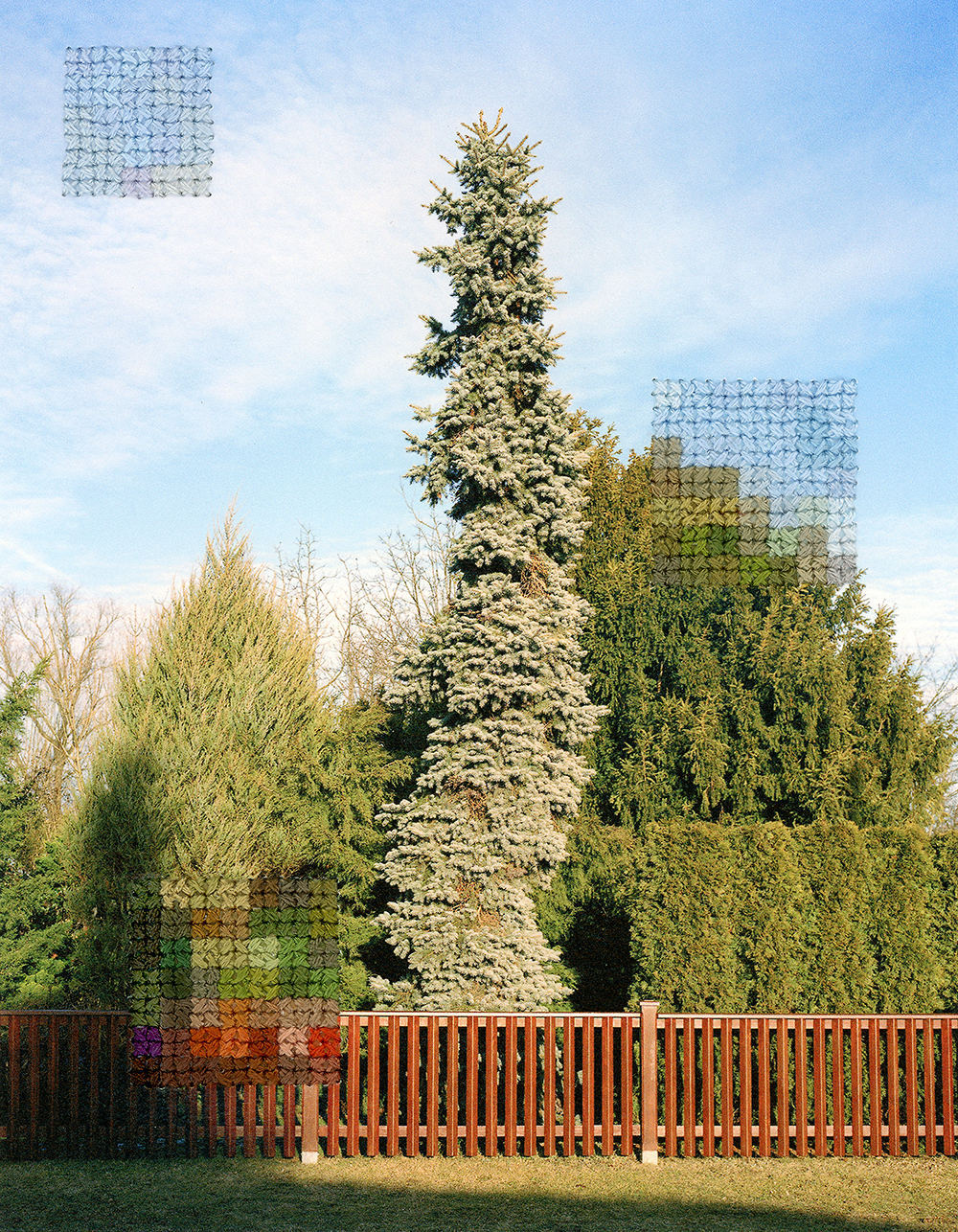
©Diane Meyer, Tree Shrub Former Wall Area Near Rudow, from Berlin, Archival Pigment Print with Hand-Sewn Embroidery
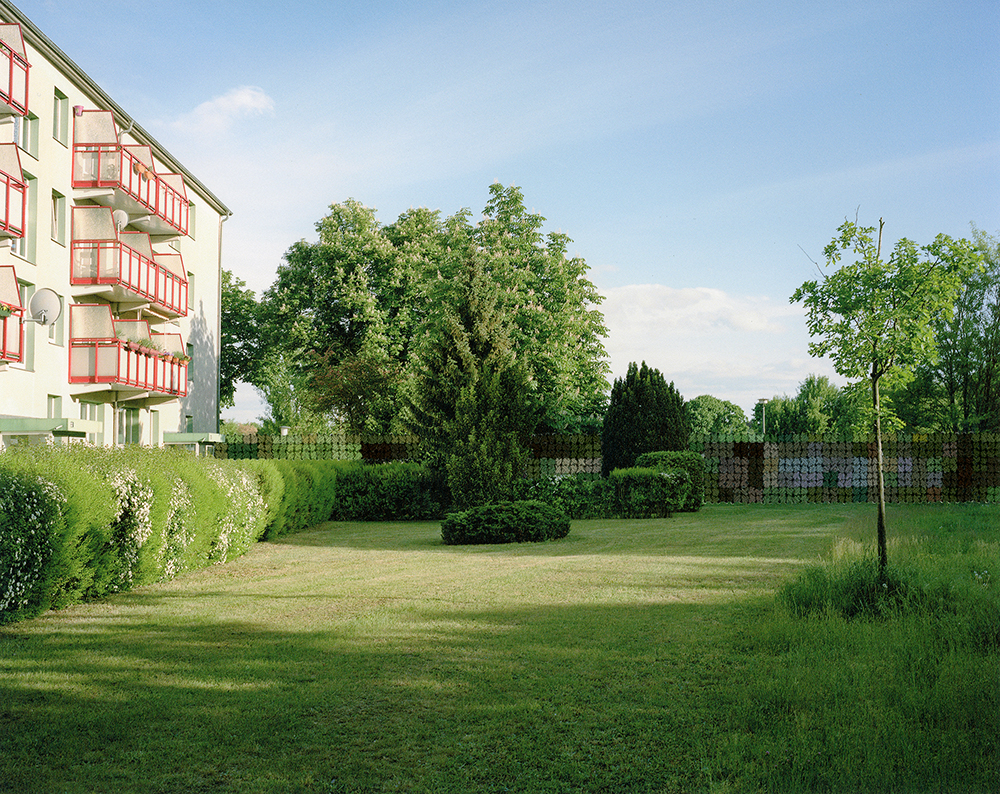
©Diane Meyer, Housing Project Planterwald, from Berlin, Archival Pigment Print with Hand-Sewn Embroidery
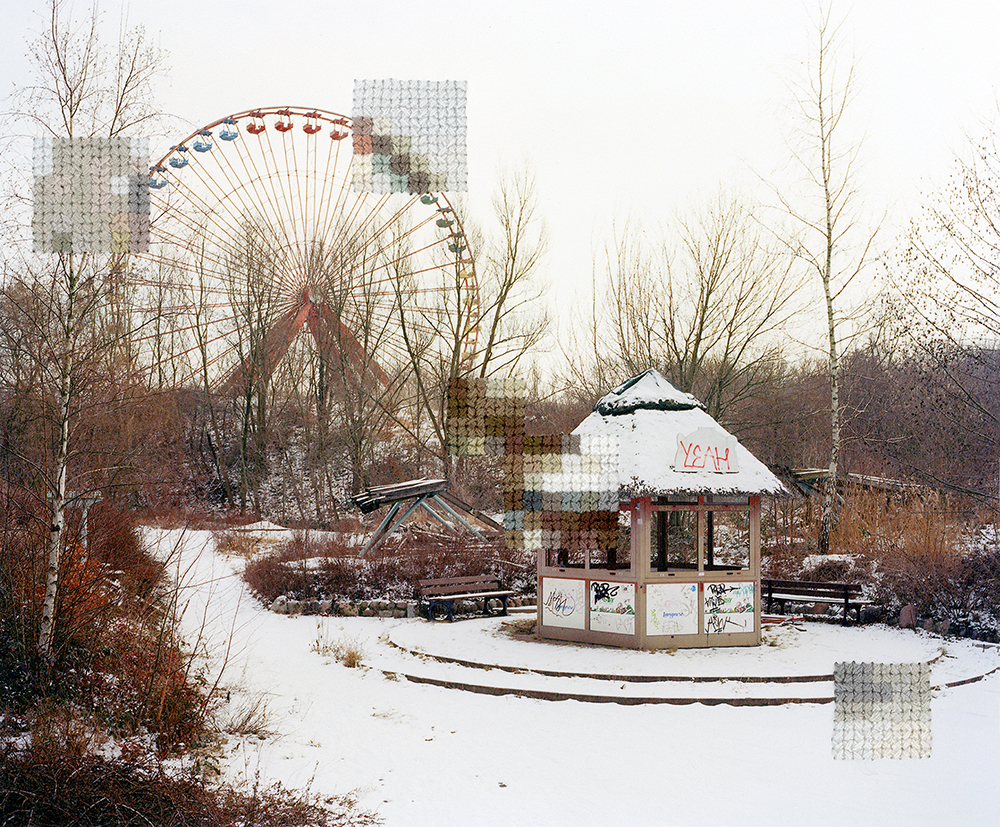
©Diane Meyer, Spree Park Former DDR Amusement Park, from Berlin, Archival Pigment Print with Hand-Sewn Embroidery
Posts on Lenscratch may not be reproduced without the permission of the Lenscratch staff and the photographer.
Recommended
-
Earth Week: Hugh Kretschmer: Plastic “Waves”April 24th, 2024
-
ALEXIS MARTINO: The Collapsing Panorama April 4th, 2024
-
Rebecca Sexton Larson: The Reluctant CaregiverFebruary 26th, 2024
-
Interview with Peah Guilmoth: The Search for Beauty and EscapeFebruary 23rd, 2024

